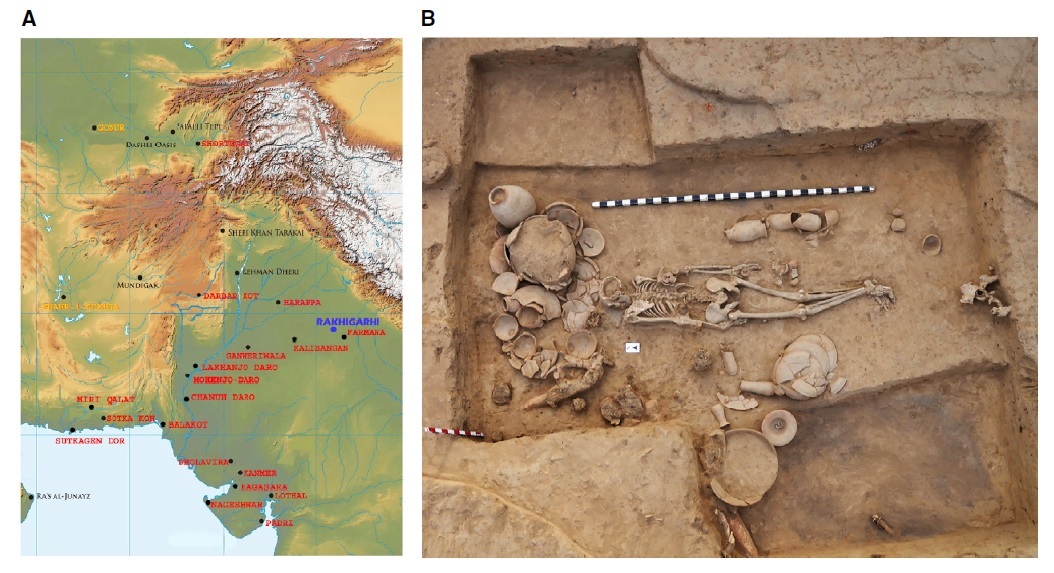Two archaeological excavations, Rakhigarhi and Keeladi, have demolished two major myths of the Aryan invasion/migration theory and the Aryan/Dravidian divide or the North-South divide.
“Power is knowledge.”
Michael Focault
“The AIT (Aryan Invasion Theory) is based purely on linguistic conjectures which are unsubstantiated.”
Klostermaier, A Survey of Hinduism, 2007, p. 21.
The National Education Policy (NEP 2020) has raised the aspirations of all stakeholders, calling for a pursuit of a holistic architecture of knowledge. The most important being how the nationalist epistemic community is going to construct the Bharatiya narrative architecture. The Left and Nehruvians cleverly followed the policy of the invaders and the colonials. While the Islamist iconoclasts straightaway attacked temples, looted, plundered and committed rape, the British were more cunning as they systematically lowered the values of these holy cities in the state machinery and in the commercial empire they built. And these false conjectures have been put into textbooks at all levels.
Advances in science and the tools it provided exposed the false interpretations. Two such archaeological excavations—Rakhigarhi and Keeladi—have demolished two major myths they constructed. One the Aryan invasion/migration theory and the Aryan/Dravidian divide or the North-South divide.
Rakhigarhi is a village and an archaeological site belonging to the Indus Valley civilisation in Hisar district of the Indian state of Haryana, situated about 150 km northwest of Delhi. It was part of the mature phase of the Indus Valley civilisation, dating to 2600-1900 BCE.
The Aryan invasion theory of the Left historians has been debunked. Also called the Indo-Aryan migration theory, it is part of a larger theoretical framework of downgrading the Ancient Indic Civilization as being established by invaders. This framework explains the similarities between a wide range of contemporary and ancient languages. It combines linguistic, archaeological and anthropological research. This provides an overview of the development of Indo-European languages, and the spread of these Indo-European languages by migration and acculturation. This was a colonial project.
The research—published in Cell, one of the world’s top journals—not only sets aside the Aryan migration theory but also notes
Neraj Rai, a scientist at the Birbal Sahani Institute of Paleobotany, Lucknow, and Rai said the research also pointed towards an “Out of India” theory around 2500-3000 BCE. The evidence comes from a related study by the same set of researchers, published simultaneously in the journal Science on Friday. The Rakhigarhi woman’s genome matched those of 11 other ancient people who lived in what is now Iran and Turkmenistan at sites known to have exchanged objects with the Indus Valley Civilisation. All 12 had a distinctive mix of ancestry, including a lineage related to Southeast Asian hunter-gatherers and an Iranian-related lineage specific to South Asia. The Indus Valley Civilisation, which at its height from 2600 to 1900 BCE covered a large swath of north western South Asia, was one of the world’s first large-scale urban societies.
IIT Kharagpur released its 2022 calendar, “Recovery of the Foundations of Indian Knowledge Systems”, in which among the various topics (some of which are controversial and bound to raise some hackles) one is on: “Why an Aryan invasion myth was forged” (September 2022). Some of the reactions on social media were negative about the topics chosen and some “mistakes” were pointed out based more on ideological differences. All those who were completely okay for many years with distortions and false information being fed to children and adults alike in the name of history, are suddenly raising their voices on seeing actual historical data and evidence being presented to the common people.
Keeladi could also provide crucial evidence for understanding the missing links of the Iron Age (12th century BCE to sixth century BCE) to the Early Historic Period (sixth century BCE to fourth century BCE) and subsequent cultural developments. The similarity of the Tamil Brahmi script to the Indus Valley Brahmi script shows the Indus valley inhabitants as those who did outward migration instead the reverse being suggested. The great Indian divide along north-south lines now stands blurred. A pathbreaking study by Harvard and indigenous researchers on ancestral Indian populations says there is a genetic relationship between all Indians and more importantly, the hitherto believed “fact” that Aryans and Dravidians signify the ancestry of North and South Indians might after all, be a myth.
“This paper rewrites history… there is no north-south divide,”’ Lalji Singh, former director of the Centre for Cellular and Molecular Biology (CCMB) and a co-author of the study concluded.
Senior CCMB scientist Kumarasamy Thangarajan said there was no truth to the Aryan-Dravidian theory as they came hundreds or thousands of years after the ancestral North and South Indians had settled in India. The study analysed 500,000 genetic markers across the genomes of 132 individuals from 25 diverse groups from 13 states. All the individuals were from six-language families and traditionally “upper” and “lower” castes and tribal groups. “The genetics proves that castes grew directly out of tribe-like organizations during the formation of the Indian society,” the study said. Thangarajan noted that it was impossible to distinguish between castes and tribes since their genetics proved they were not systematically different.
A holistic and interdisciplinary approach has exposed the Nehruvian-Left lobby, who manufactured history and narratives for some persons and purposes.

Prof Santishree Dhulipudi Pandit is the Vice Chancellor of JNU.

